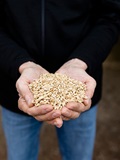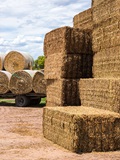Gippsland
20 May 2020
| Date | Gipps 23 | Gipps 22 | Gipps 5YA |
|---|---|---|---|
| 06-Jan-23 | 236 | 100 | 209 |
| 13-Jan-23 | 250 | 100 | 193 |
| 20-Jan-23 | 280 | 100 | 195 |
| 27-Jan-23 | 290 | 100 | 197 |
| 03-Feb-23 | 290 | 100 | 199 |
| 10-Feb-23 | 300 | 100 | 199 |
| 17-Feb-23 | 300 | 100 | 190 |
| 24-Feb-23 | 300 | 100 | 180 |
| 03-Mar-23 | 300 | 100 | 182 |
| 10-Mar-23 | 300 | 100 | 187 |
| 17-Mar-23 | 300 | 100 | 190 |
| 24-Mar-23 | 300 | 100 | 190 |
| 31-Mar-23 | 295 | 100 | 190 |
| 07-Apr-23 | 295 | 100 | 190 |
| 14-Apr-23 | 295 | 104 | 191 |
| 21-Apr-23 | 295 | 108 | 192 |
| 28-Apr-23 | 295 | 113 | 193 |
| 05-May-23 | 295 | 113 | 193 |
| 12-May-23 | 293 | 113 | 209 |
| 19-May-23 | 290 | 113 | 209 |
| 26-May-23 | 290 | 113 | 209 |
| 02-Jun-23 | 290 | 118 | 218 |
| 09-Jun-23 | 290 | 118 | 221 |
| 16-Jun-23 | 290 | 118 | 217 |
| 23-Jun-23 | 290 | 118 | 214 |
| 30-Jun-23 | 285 | 118 | 214 |
| 07-Jul-23 | 285 | 118 | 227 |
| 14-Jul-23 | 283 | 119 | 227 |
| 21-Jul-23 | 280 | 120 | 227 |
| 28-Jul-23 | 280 | 135 | 230 |
| 04-Aug-23 | 265 | 135 | 230 |
| 11-Aug-23 | 265 | 135 | 249 |
| 18-Aug-23 | 265 | 135 | 249 |
| 25-Aug-23 | 265 | 135 | 249 |
| 01-Sep-23 | 265 | 135 | 249 |
| 08-Sep-23 | 135 | 249 | |
| 15-Sep-23 | 135 | 249 | |
| 22-Sep-23 | 135 | 259 | |
| 29-Sep-23 | 135 | 269 | |
| 06-Oct-23 | 135 | 269 | |
| 13-Oct-23 | 135 | 269 | |
| 20-Oct-23 | 140 | 270 | |
| 27-Oct-23 | 140 | 270 | |
| 03-Nov-23 | 140 | 276 | |
| 10-Nov-23 | 140 | 276 | |
| 17-Nov-23 | 160 | 280 | |
| 24-Nov-23 | 160 | 280 | |
| 01-Dec-23 | 163 | 245 | |
| 08-Dec-23 | 165 | 238 | |
| 15-Dec-23 | 183 | 199 | |
| 22-Dec-23 | 195 | 202 | |
| 29-Dec-23 | 223 | 212 |
Notes:
Change in price is the change since the last report. Hay quoted is sourced and delivered locally, GST exclusive unless stated otherwise. It should be noted that local prices quoted may not be the cheapest available, sourcing it from another region may be more affordable, and buyers are encouraged to evaluate all options. Prices are indicative to a mid-range shedded product, and based on the best indication of market value at the time of reporting. It should be noted there is a wide variation in quality of hay, prices for a mid-range product will not reflect the weighted average of trade. Prices will naturally vary based on the product quantity and quality, buyer/seller relationship and the size of the trade.The hay report has been commissioned by Dairy Australia to provide an independent and timely assessment of hay markets in each dairy region. This report is created using data provided by the Australian Fodder Industry Association (AFIA). It should be remembered that actual prices may vary for quality or other reasons. Whilst all reasonable steps have been taken to ensure the accuracy of the information contained in this report, Dairy Australia disclaims all liability to the fullest extent permitted by Australian law for any inadvertent errors and for any losses or damages stemming from reliance upon its content. Dairy Australia recommends all persons seek independent advice and, where appropriate, advice from a qualified advisor before making any decisions about changes to business strategy.
Commentary
- Little to no rainfall across the region this week with most areas receiving 10mm of rain or less, except in the far east of the region which received falls of up to 25mm of rain.
- Colder overnight conditions continue as the winter weather begins, with frost and mist affecting a wide range. Farmers are monitoring pasture growth carefully; however no significant slowdown has been recorded yet.
- With patches of clear sky this week some cutting and bailing has been completed. The sporadic rainfall meant there are still paddocks ready to be cut. Growers are looking for a few more clear days.
- Growers continue over seeding of grass with rye in the region. Parts of the region are doing well now with recent rain falling at the optimal time.
- Most new season pastures have been sown now. Seeding of cereal crops is underway, these will be grazed in the coming months or carried through for new season hay.
- The replanted crops in the east of the region have now had the necessary follow-up rain and are looking to be growing well and back on schedule.
- Hay and silage enquiries have increased over the last week as the temperatures dropped and farmers are watching for the slowdown of pasture feed. Farmers continue to seek out good quality fodder to meet protein needs over the coming months
- Slight change in prices this week.
- Cereal hay: +$5 ($200 to $250/t). Prices increase this week.
- Lucerne hay: +/-0 ($530 to $550/t). Prices remain steady this week.
- Straw: +/-0 ($80 to $100/t). Prices remain steady this week.
- Pasture hay: +$5 ($90 to $145/t). Prices increase this week.
Please note: Unless stated otherwise, prices are per tonne, sourced and delivered locally. The price range indicated is for feeds of varying quality with the price range generally indicative of quality of feed. We recommend feed testing and viewing of fodder before purchase to be sure of the quality of feed.

